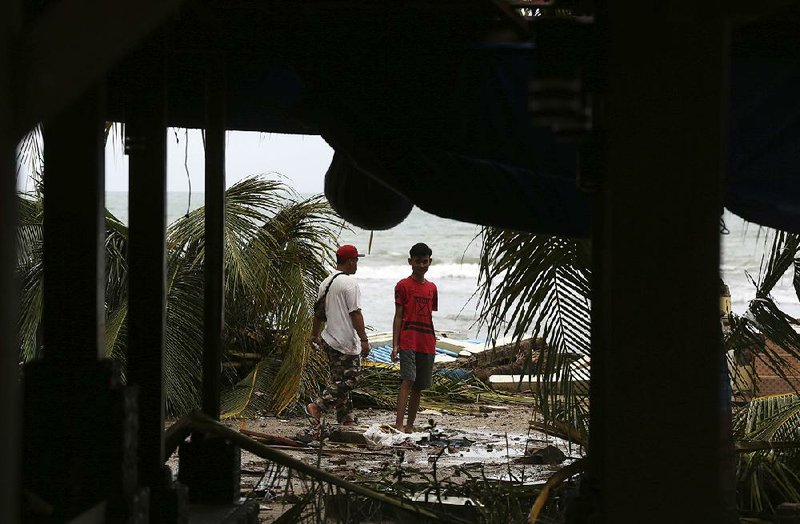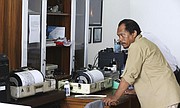CARITA, Indonesia -- Indonesia raised the danger level for an island volcano that triggered a tsunami on the weekend, killing at least 430 people in Sumatra and Java, and widened its no-go zone.
The country's volcanology agency said Thursday that the Anak Krakatau volcano's alert status had been raised to the second-highest level and the exclusion zone more than doubled to a 3-mile radius.
The eruption on Saturday evening caused part of the island in the Sunda Strait to collapse into the sea, apparently generating tsunami waves of more than 6½ feet. Most tsunamis are caused by earthquakes.
The government has warned communities in the strait to stay a little over half a mile away from the coastline because of the risk of another tsunami triggered by Anak Krakatau's eruptions. A navy vessel was expected to pass by the island later Thursday, which could give scientists more information about the risks of a second collapse.
"There's still a chance of a landslide, even under the sea level or on the sea level," said Rudy Sunendar, head of the Energy Ministry's geology department.
"We don't know exactly because we are not yet gone to the field" because of bad weather, he said at the volcano's monitoring post. "Based on the satellite imagery interpretation, there is collapse of some area of Mount Anak Krakatau."
Saturday's disaster struck without warning, surprising people in a country that regularly suffers landslides, earthquakes and volcanic eruptions. No big earthquake shook the ground beforehand, and the waves surged inland at night on a holiday weekend while people were enjoying concerts and other beachside activities.
Indonesia's tsunami warning system relies on land seismometers and buoys connected to tidal gauges and is not equipped to detect underwater landslides. The system, in any case, has not operated for years because the buoys have been vandalized or not maintained because of low funding.
Heavy rains and high seas have hampered the search for victims. Some bodies were found at sea and at least 159 people are missing.
On Thursday, residents of badly affected Banten province on Java island were searching through the debris of destroyed or damaged homes for anything salvageable.
"I've lost everything I have, my house and all belongings inside it," said farmer Muhamad Sarta.
"I just hope for some help from the government," he said. "Hopefully there will be some repairs. I have nowhere to go. I have no money. Whatever I had was lost in the water."
Radar data from satellites, converted into images, show Anak Krakatau shrunk dramatically after Saturday's eruption.
Satellite photos aren't available because of cloud cover but radar images from a Japan aerospace agency satellite taken before and after the eruption show the volcano's southwestern flank has disappeared.
The agency's post-eruption image shows concentric waves radiating from the island, which experts say is caused by its ongoing eruptions.
Dave Petley, head of research and innovation at Sheffield University who analyzed similar images from a European Space Agency satellite, said they support the theory that a landslide, most of it undersea, caused the tsunami.
"The challenge now is to interpret what might be happening on the volcano, and what might happen next," he wrote in a blog.
Anak Krakatau, which means child of Krakatau, was created by the infamous Krakatau volcano that affected the global climate with an eruption in 1883.
Anak Krakatau first rose above sea level in 1929, according to Indonesia's volcanology agency, and has been increasing its landmass since then.
A Section on 12/28/2018

